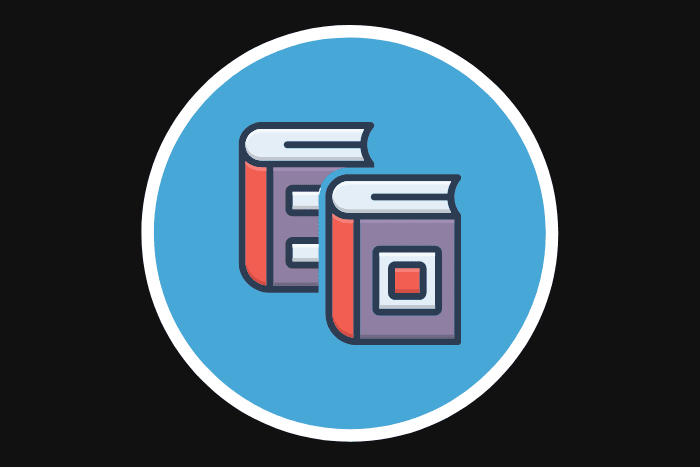Are you struggling to find good tone examples? Perhaps the tone of your own internal narrative, right now, might be best described as worried or confused.
We’re here to cut through the confusion.
So what’s tone?
It’s not quite the same as a writer’s voice or style.
Instead, tone conveys how the narrator or author feels about their subject matter. The tone of a piece might be upbeat, funny, sorrowful… or something else entirely.

Tone Definition
Tone, in writing, is a literary device that shows us how the writer feels about the subject matter — or, in some cases, their target audience.
In fiction, tone can also convey the feelings of the narrator or a viewpoint character: in this case, it’s important to distinguish between the writer’s attitude and the character’s attitude.
(Be careful not to ascribe views to the writer that they may not actually agree with.)
Tone is conveyed through careful word choice, often including figurative language such as imagery and personification. Punctuation, as well as sentence structure and sentence length, can also affect the tone.
Why Use Tone in Writing?
Every piece of writing has a tone — even if that tone is dry and factual. Writers usually deliberately create a tone, in order to:
- Craft a more compelling piece of writing: one that reaches the target audience on an emotional level, making a connection between the writer and the reader.
- Add layers of meaning to their work: the tone of a piece could say a lot more than the mere subject matter at hand.
- Position themselves, as authors, in a particular way. A nonfiction author might adopt a gently humorous tone to seem more approachable, for instance.
- Create an emotional effect. Although this is usually done by the mood of a piece, the tone can also cause the reader to feel something. A dissonant tone — something serenely calm about the horrors of the subject matter — can be unnerving or poignant.
Difference Between Tone and Mood
It’s easy to get confused between the tone and the mood of a piece of writing. Here’s how they compare:
- Tone tells us how the author (or the narrator or viewpoint character) feels about the subject matter. They might be lighthearted, serious, angry, laid-back, or something else entirely.
- Mood is the atmosphere or ambiance of a piece of writing. It’s how the author wants the reader to feel. The mood of a piece might be scary, funny, uplifting, or tense.
Often, the tone and mood will work together in harmony, so it’s easy to confuse them. The character might be frightened and the author wants the reader to feel a sense of dread, too.
But tone and mood can also create a contrast. Perhaps the tone is light and frivolous, but the reader is aware of something much darker beneath the surface, creating a suspenseful mood.
7 Common Types of Tone in Writing (+ Examples)
While there are lots of possible tones for a piece of writing, there are certain tones that are particularly common. Let’s take a look at seven of those – with examples.
1. Humorous
2. Serious
3. Fearful
4. Matter-of-fact
5. Formal
6. Hopeful
7. Honest
10 Examples of Tone in Literature, Poetry, and Pop Culture
Next, we’ll dig into some examples of tone from literature, poetry, and pop culture, so you can see exactly how writers create the tone of a piece.
Examples of Tone in Literature

1. The Hobbit, J.R.R. Tolkein (1937)
In a hole in the ground there lived a hobbit. Not a nasty, dirty, wet hole, filled with the ends of worms and an oozy smell, nor yet a dry, bare, sandy hole with nothing in it to sit down on or to it: it was a hobbit-hole and that means comfort. It had a perfectly round door like a porthole, painted green, with a shiny yellow brass knob in the exact middle.
In The Hobbit, Tolkein adopts a leisurely, conversational tone, as if talking to a child. This is no great surprise: the stories began as bedtime stories told to his own children.
2. A Wizard of Earthsea, Ursula K. Le Guin (1968)
The name he bore as a child, Duny, was given him by his mother, and that and his life were all she could give him, for she died before he was a year old. His father, the bronze-smith of the village, was a grim unspeaking man, and since Duny’s six brothers were older than he by many years and went one by one from home to farm the land or sail the sea or work as smith in other towns of the Northward Vale, there was no one to bring the child up in tenderness.
Here, Le Guin uses a factual but slightly archaic tone, which creates a sense of distance between the reader and the story — but also presents her fantasy world (Earthsea) in a realistic way.
3. Chocolat, Joanne Harris (1999)
We came on the wind of the carnival. A warm wind for February, laden with the hot greasy scents of frying pancakes and sausages and powdery-sweet waffles cooked on the hotplate right there by the roadside, with the confetti sleeting down collars and cuffs and rolling in the gutters like an idiot antidote to winter.
The unique tone of Chocolat — magical, sumptuous, and rich — is one of the things Joanne Harris is rightly praised for.
4. The Hunger Games, Suzanne Collins (2008)
[Buttercup] hates me. Or at least distrusts me. Even though it was years ago, I think he still remembers how I tried to drown him in the bucket when Prim brought him home. Scrawny kitten, belly swollen with worms, crawling with fleas. The last thing I needed was another mouth to feed. But Prim begged so hard, cried even, I had to let him stay.
Katniss’s narrative voice quickly gives us a no-nonsense, unsentimental tone. There are hints of something rather jaded here: “the last thing I needed was another mouth to feed.”
Examples of Tone in Poetry

Poetry can take on a wide range of tones, conveying these through careful and precise choice of words, and even through devices like line breaks and the rhyme scheme.
5. The Octopus, Ogden Nash (1902-1971)
Tell me, O Octopus, I begs
Is those things arms, or is they legs?
I marvel at thee, Octopus;
If I were thou, I’d call me Us.
The playful humor of Ogden Nash’s poetry is evident in the tone of The Octopus, which combines an archaic, formal tone (“I marvel at thee”) with a distinctly informal tone (“is those things arms or is they legs?”)
6. William Blake, The Tyger (1794)
Tyger Tyger, burning bright
In the forests of the night;
What immortal hand or eye,
Could frame thy fearful symmetry?
There’s an awestruck tone in The Tyger, as well as a hint of danger (“burning bright” and the “forests of the night”) and of fear.
7. The Hero, Siegfried Sassoon (1917)
Quietly the Brother Officer went out.
He’d told the poor old dear some gallant lies
[…]He thought how ‘Jack’, cold-footed, useless swine,
Had panicked down the trench that night the mine
Went up at Wicked Corner; how he’d tried
To get sent home, and how, at last, he died,
Blown to small bits. And no one seemed to care
Except that lonely woman with white hair.
The tone here is biting and cold, starkly exposing the horrors and truths of war — Siegfried Sassoon was one of the leading poets of World War 1.
Examples of Tone in Pop Culture

Tone isn’t limited to written work. Let’s take a look at some examples of tone from TV and film.
8. Brooklyn 99 (2013 – 2021)
Brooklyn 99 has a silly, lighthearted tone, primarily provided by the dialogue — but also by the visuals (like the photos that Holt shows Peralta in this clip).
9. Firefly (2002 – 2003)
Firefly’s tone can be gritty and dark at times — but there’s also a strong strand of irreverent humor running through the series. Serious, dramatic moments are often undercut with humor, like when Captain Malcolm Reynolds kicks Crow into the — running — engines.
10. The Sims (2000 onwards)
Quadpod Grill description, from The Sims 4:
A high-tech heat ray in the hood of the Quadpod ensures an even cook every single time. That’s not to say that you won’t burn your hot dogs … just rest assured that the problem lies with you.
The Sims’ whimsical tone (and refusal to take itself too seriously) shows up in item descriptions — as well as in the general gameplay.
Use These Tone Examples to Deepen Your Understanding
If you don’t quite have a handle on tone yet, go back over the different tone examples above.
You might want to compare two different tone examples, looking closely at the word choices, sentence structure, and more, to see how exactly they create such different tones.
Next time you read something — whether it’s a blog post, newspaper article, or novel — pay attention to tone.
What’s the author, or character, telling you about their attitude to the subject matter?
The post 17 Tone Examples From Writing (+ Definition & Types of Tone) appeared first on Smart Blogger.

No comments:
Post a Comment